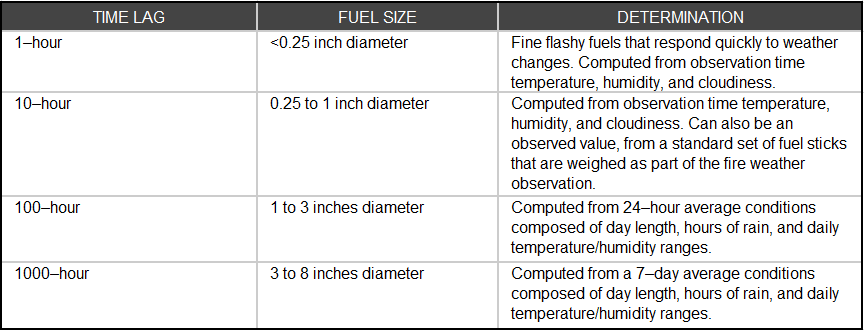What is Dead Fuel Moisture?
A recent lack of significant rainfall has kept Southern California in extreme drought, which means there is increased potential for significant wildfire due to dangerous levels of dead fuel moisture. As explained by NOAA, fuel moisture is a measure of the amount of water in a potential fuel, and is expressed as a percentage of the dry weight of that fuel. So if leaves and downed trees were completely dry in a given area, the fuel moisture level would be 0%.
When fuel moisture content is high, fires do not ignite readily, or at all, because most of the fire’s heat energy is used up trying to evaporate and drive water from the plant in order for it to burn. When the fuel moisture content is low (like in drought-stricken Southern California), fires start more easily and can spread rapidly as all of the heat energy goes directly into the burning flame itself. When drought is extreme and the fuel moisture content is less than 30%, that fuel is considered to be dead, giving us the “dead fuel moisture” designation.
The United States Forest Service which manages a nationwide fuel moisture index, classifies fuel moisture based on two metrics: fuel size and time lag.
- Fuel size refers to the actual physical dimensions of the fuel (i.e. the diameter of downed logs or branches).
- A fuel’s time lag classification is proportional to its diameter and is loosely defined as the time it would take for 2/3 of the dead fuel to respond to atmospheric moisture. For example, if a fuel had a “1-hour” time lag, one could expect its wildfire susceptibility to change after only 1 hour of humid weather. Fuels with 100- or 1000-hour time lags would be expected to be much less resistant to humidity.
Fuel moisture is dependent upon both environmental conditions (such as weather, local topography, and length of day) and vegetation characteristics. The smallest fuels most often take the least time to respond to atmospheric moisture, whereas larger fuels lose or gain moisture slowly over time.
The classifications of the Forest Services’s index (also known as NFDRS) are as follows:

The Dead Fuel Moisture Time Lag Classes as defined by the United States Forest Service
Drought Conditions Improving in California
According to the weather almanac, San Diego–home to RedZone’s intelligence team–had received a minuscule .7 inches of rain since June 1st. Luckily, a significant rain event entered the southern California region on Thursday evening, adding wetness to the low fuel moisture readings around the region.
Since late Thursday night (12/15), significant rains have finally fallen across the area. The gusty winds and showers are expected to begin tapering off late Friday as the moisture exits to the east, but a long-awaited significant wetting event has been left behind. Early reports on Friday (12/16) have measured up to 3.3 inches in the East County Mountains and greater than 1 inch along the San Diego Coast, far exceeding the cumulative totals since June.
As we discussed a few weeks ago, the drought situation in Northern California had already improved earlier this year, and now the dry weather in Southern California appears to be coming to an end.
Source(s):
http://patch.com/california/ranchobernardo-4sranch/storm-moves-through-san-diego-region
https://www.ncdc.noaa.gov/monitoring-references/dyk/deadfuelmoisture
http://www.nwcg.gov/glossary/a-z
http://www.wfas.net/index.php/dead-fuel-moisture-moisture–drought-38




One Comment